Platy Care for Beginners: A Colorful, Low-Stress Companion for Your Tiny Tank
If you’ve been dreaming of a peaceful fish tank but feel overwhelmed by all the equipment, advice, and aquarium “rules,” take a breath—you’re not alone. Fishkeeping doesn’t have to be complicated, expensive, or fragile. It can be simple, joyful, and deeply calming. And one of the best fish to begin with is the male platy.
In this guide to male platy care for beginners, we’ll walk you through the essentials without the overload. You’ll learn how to choose healthy fish, set up their tank, feed and care for them, and avoid common pitfalls—all with a focus on simplicity and emotional ease.
What Makes the Male Platy So Beginner-Friendly?
Platies (Xiphophorus maculatus) are small, peaceful livebearers known for their brilliant colors (orange, red, yellow, black, blue and white. and easygoing nature. Males in particular are ideal for beginners because they don’t contribute to the breeding problem that often overwhelms new fishkeepers who unknowingly buy both sexes.
With male-only groups, you get all the beauty and activity of platies—without the surprise fry or stress of overpopulation. They’re hardy, adaptable, and friendly, making them a perfect choice for anyone trying to create a calming, low-maintenance aquarium in a small space.
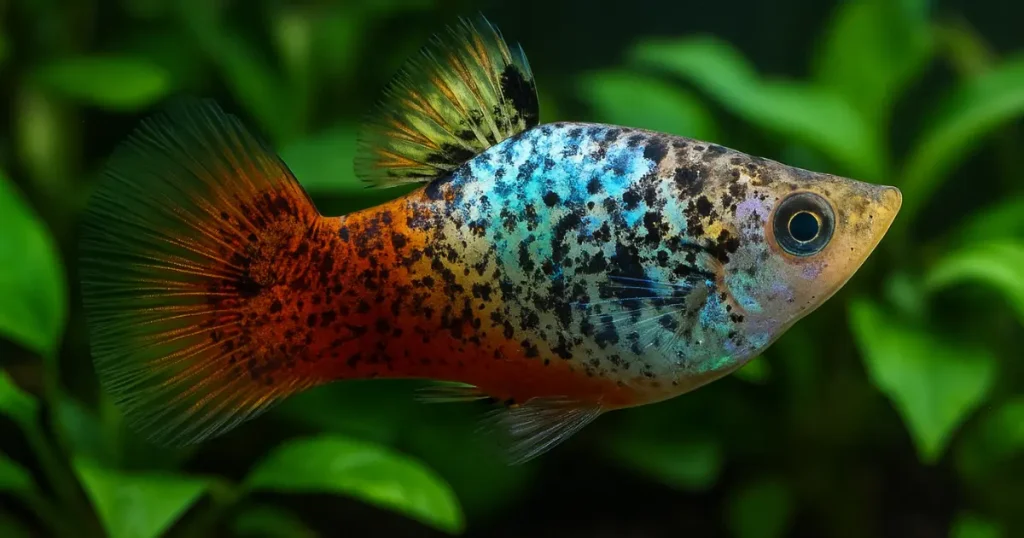
How to choose Healthy Platies at the Store?
When you’re choosing male platies at the fish store, slow down and take a few moments to really observe them. A healthy male platy should be active, bright in color, and moving comfortably around the tank.
Look for rounded, even bodies, especially around the belly. The tail and dorsal fins should be spread out, not clamped or shredded. Watch for fluid, rhythmic swimming—platies are naturally curious and sociable, so a fish that isolates itself, hides constantly, or floats near the surface may be unwell.
A good rule of thumb is to choose fish that are eating when offered food and swimming toward the front of the tank to explore. Avoid any fish that appear pale, sluggish, or have visible white spots, sunken bellies, or ragged fins. Ask the store if the fish have been quarantined or recently arrived—if so, give them a few more days before buying.
Tank Setup: What Do Platies Really Need?
Platies aren’t demanding, but they do best when their environment is thoughtfully set up. For male platy care for beginners, the goal is to create a clean, stable, and slightly stimulating habitat with enough room to swim and rest.
A single male platy could technically survive in a 5-gallon tank, but to reduce stress and support natural behaviour, it’s much better to start with at least a 10-gallon tank for a small group of three. Platies are social and enjoy swimming around each other, even without forming tight schools. A trio of males creates a vibrant but peaceful dynamic, especially in planted tanks. Overcrowding could also lead to aggression among the male platies.
The water should be kept between 72–78°F (22–26°C) with a pH of 7.0–8.2. They tolerate slightly harder water well, which makes them a great fit for people using treated tap water. A small heater and adjustable-flow filter are recommended for stability, but you don’t need high-end gear. Consistency is more important than perfection.
Platies prefer gentle water flow and feel safest when they have areas to retreat to. Use decorations, silk or live plants (like Java fern, Hornwort, or Anubias), and a dark substrate to create a calming, natural look. Keep the lighting soft or on a timer to maintain a steady rhythm—they’ll adapt to your routine and come to expect feeding and “quiet time.”
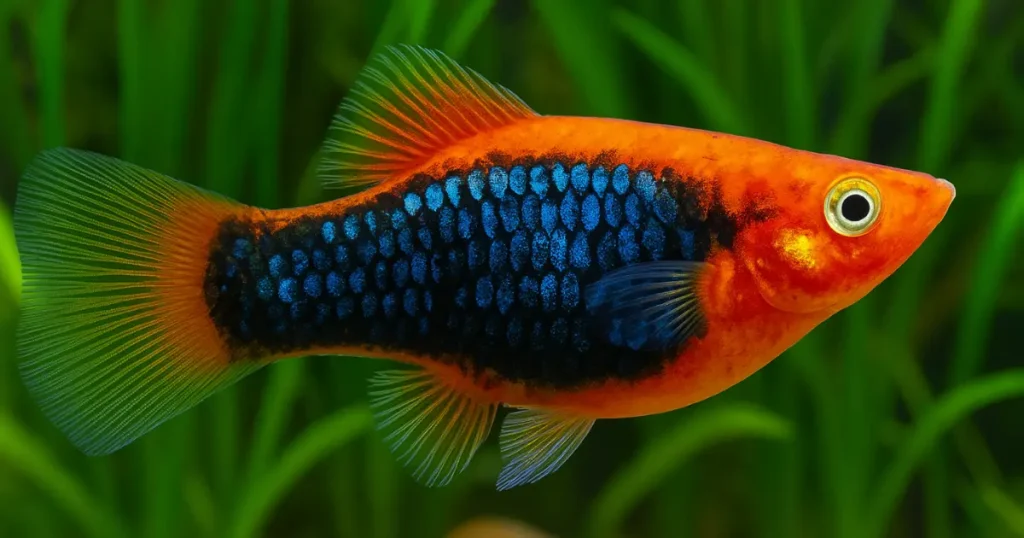
Ideal Tankmates] for the Platy
Male platies get along well with a wide range of peaceful community fish. Because they’re livebearers, some people confuse them with guppies—but they tend to be more grounded and less nippy.
Good tankmates include:
- Harlequin or Lambchop Rasboras
- Otocinclus catfish
- Pygmy Corydoras
- Endler’s Livebearers (male-only to avoid breeding)
- Nerite snails
- Amano or Cherry shrimp (in mature, well-planted tanks)
Avoid housing them with aggressive or fast-swimming species like tiger barbs, danios, or large cichlids. Large fish like Oscars, nippers like crawfish and long flowing fish like Siamese Fighters (Bettas) are also not suitable tankmates. Also skip the females unless you’re ready to deal with babies—platies are prolific breeders.
Platies will breed with Mollies, but do not mix males and females if you don’t want to have hybrids and males harrasssing females.
Feeding Tips for Platy Fish
Feeding platies is one of the most enjoyable and low-stress parts of the routine. They are not picky eaters, but that doesn’t mean they should be fed anything.
A high-quality tropical fish flake or pellet should be the base of their diet. Supplement this with the occasional blanched vegetable (like zucchini or spinach), a few crushed algae wafers, or frozen treats like bloodworms or daphnia once or twice a week.
Feed your platies once or twice a day, offering just what they can eat in 1–2 minutes. They’ll often beg for more—they’re opportunistic feeders—but resist the urge. Overfeeding is a common beginner mistake that leads to poor water quality and fish stress.
Remove uneaten food promptly and watch for signs of overeating: sluggishness, bloating, or floating at the surface can all indicate they’ve had too much.
Behavior & Temperament
Male platies are peaceful, social, and active without being frantic. They tend to stay mid-to-top level in the tank and enjoy swimming across open spaces, exploring plants, and hovering near surfaces when resting.
They don’t school tightly like rasboras, but they do enjoy the company of other platies or community fish. Watching them swim casually across the tank is both soothing and engaging—perfect for mindfulness breaks or gentle background movement during your day.
Occasionally, one male may posture slightly to establish dominance, but real aggression is rare if you provide enough space and cover.
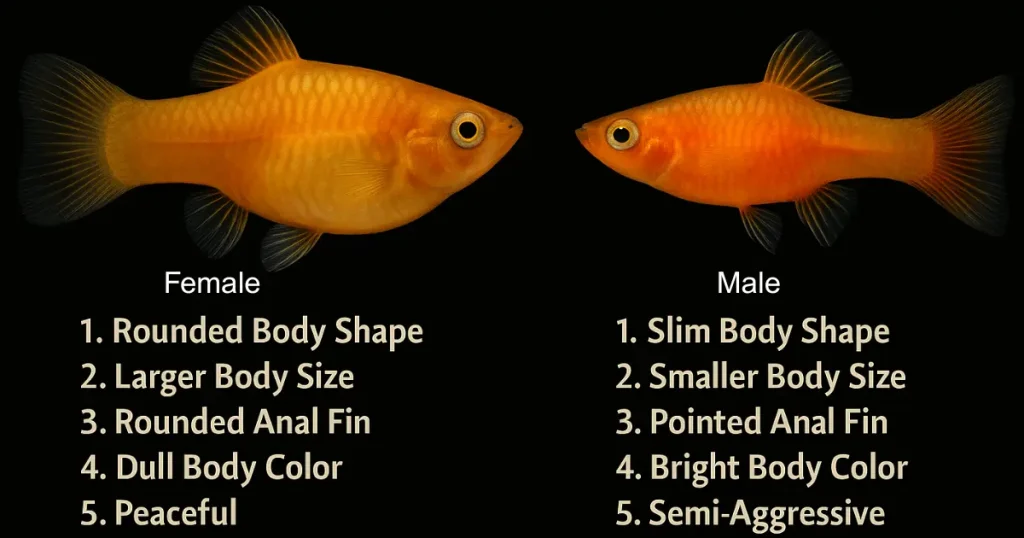
Creating the Right Vibe
Fishkeeping should feel like a sanctuary, not another task. The best approach is to create a tank that runs itself 90% of the time, with just a little help from you.
- Use a timer to keep the lighting steady—about 6–8 hours/day is ideal.
- Set reminders for weekly 25–30% water changes.
- Keep test strips on hand to check pH and nitrate levels monthly.
- Avoid big swings in temperature or water parameters—platies are hardy, but stress is still real.
For vacations or busy periods, your platies will be fine without food for 2–3 days. If you’re away longer, an automatic feeder with portion control is helpful, especially if you’ve got other community fish sharing the tank.
Common Issues with Platy Fish and How to Avoid Them
Overcrowding is a common beginner error, especially when male and female platies are mixed. Stick to all males unless you’re prepared to manage fry or have a plan to rehome extras.
Overfeeding leads to ammonia buildup, cloudy water, and health issues. Remember—clear water doesn’t mean clean water. Stick to small portions and remove excess.
Skipping water changes might seem fine for a few weeks, but even stable tanks need maintenance. Build a routine that fits your energy levels—don’t aim for perfection, just consistency.
Ignoring aggression is rare in male-only tanks, but if one fish becomes a bully, rearranging the tank decor or adding floating plants can disrupt the hierarchy and reduce stress.
Final Thoughts
Male platies are the ultimate beginner fish: forgiving, colorful, sociable, and gentle. They don’t need a giant tank, fancy gear, or constant attention. They just need a few companions, clean water, and a steady hand—and in return, they bring movement, color, and calm to your day.
If you’ve been afraid of starting your fishkeeping journey, male platy care for beginners is one of the safest and most rewarding places to begin. With a small, thoughtfully arranged tank and a simple weekly routine, you’ll not only succeed—you’ll thrive.
Affiliate Disclosure: This post may contain affiliate links. If you click through and make a purchase, I may earn a small commission at no extra cost to you. I only share products I trust to help you create a peaceful, beginner-friendly fish tank. 💙

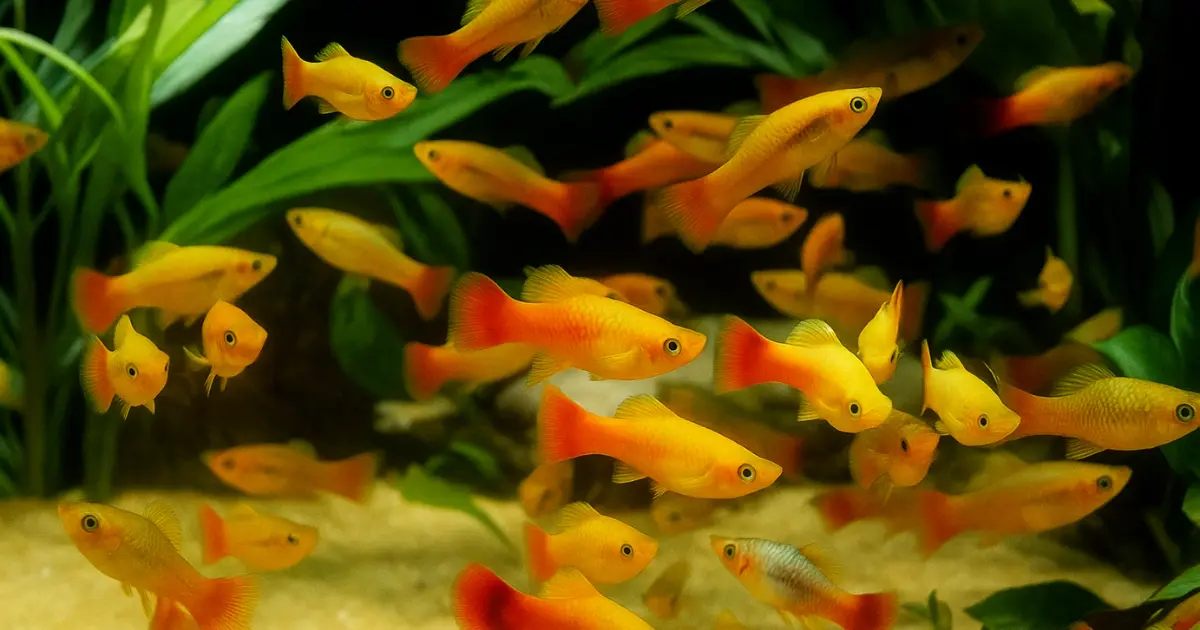
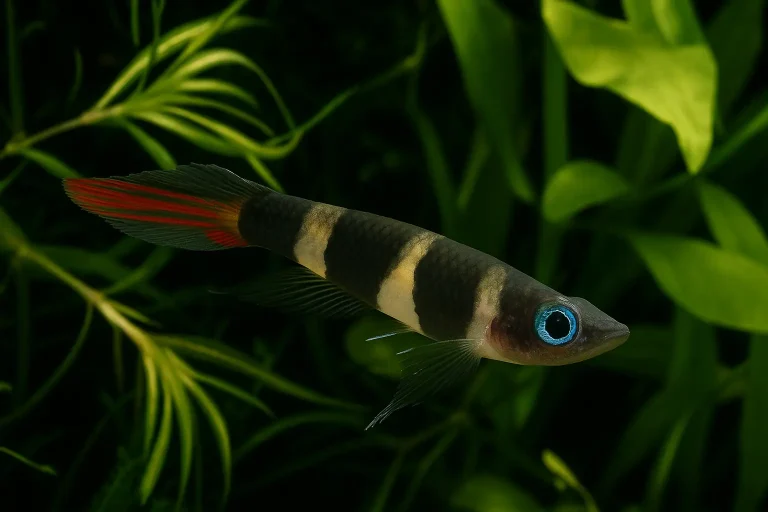
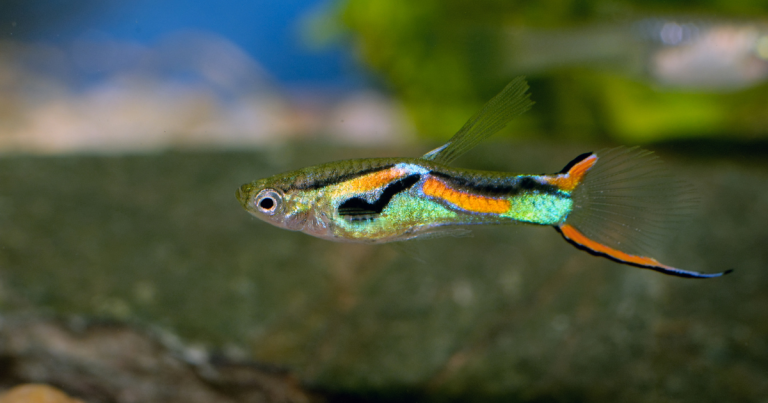
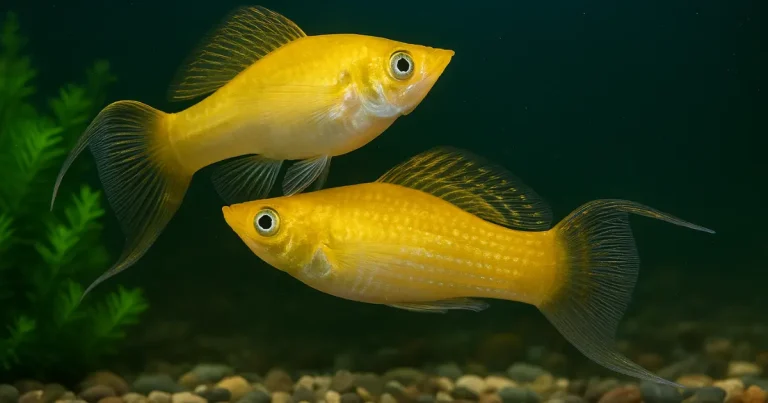
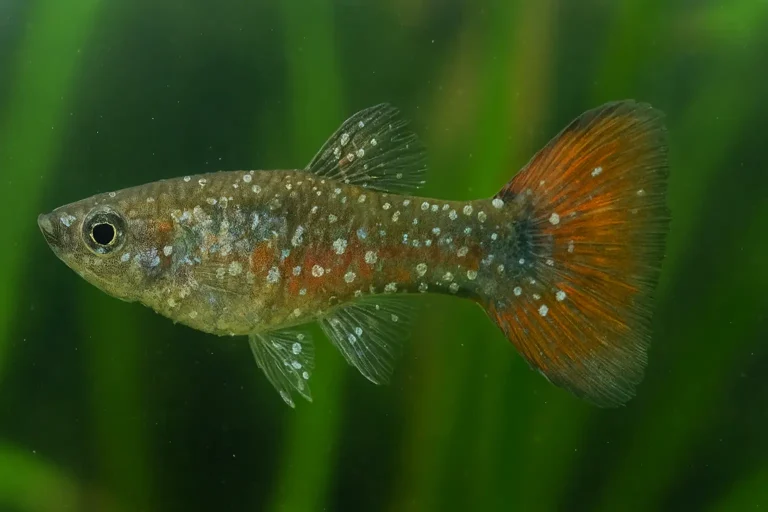
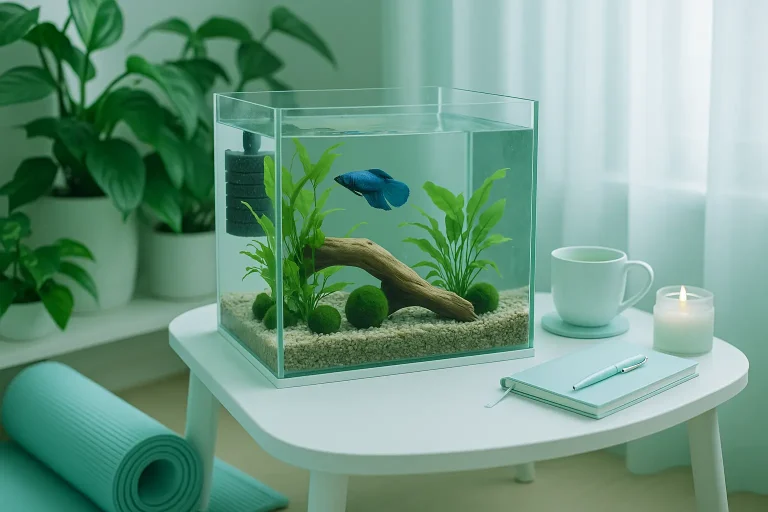
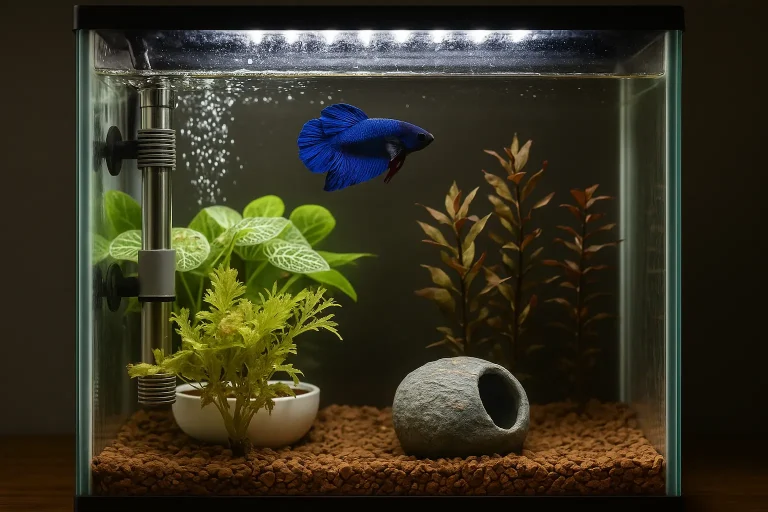
Leave a Reply